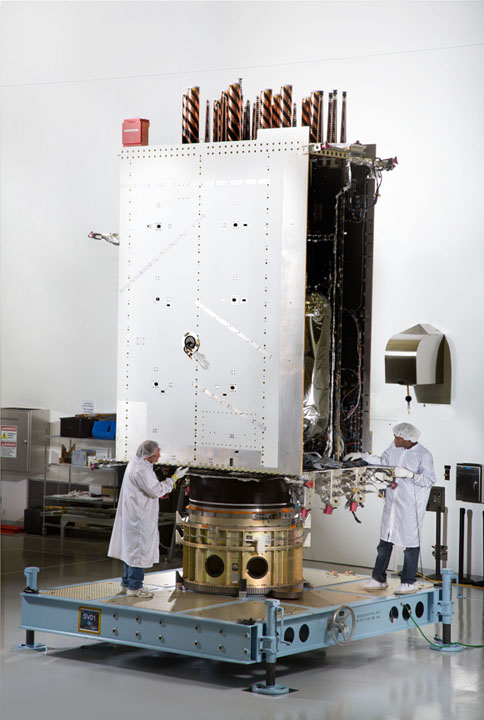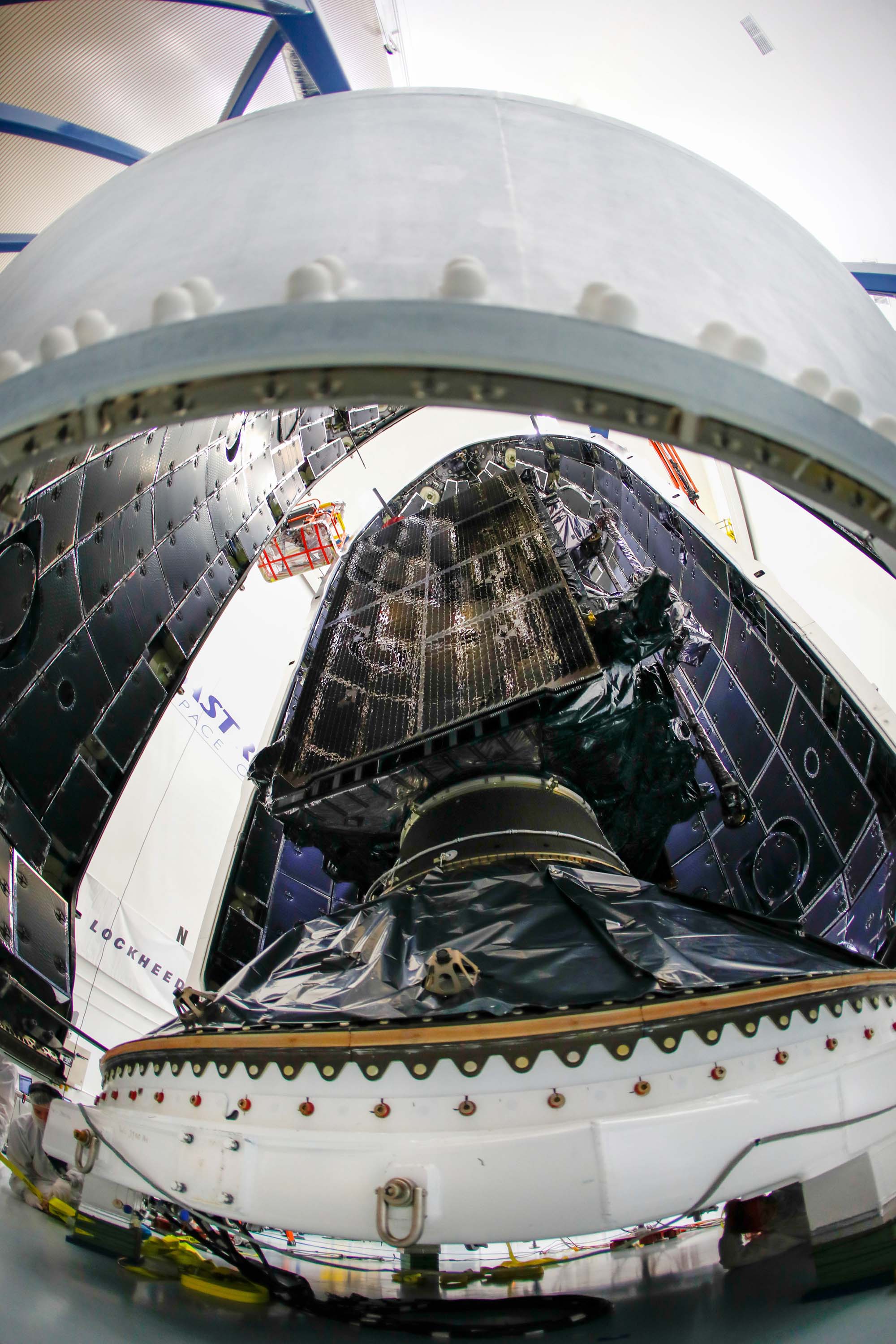 In April, Lockheed Martin fully integrated the U.S. Air Force’s first next-generation GPS III satellite at the company’s Denver, Colorado–area satellite manufacturing facility. The first in a design block of new, more powerful and accurate GPS satellites, GPS III Space Vehicle One is now preparing for system-level testing this summer. Lockheed Martin photo
In April, Lockheed Martin fully integrated the U.S. Air Force’s first next-generation GPS III satellite at the company’s Denver, Colorado–area satellite manufacturing facility. The first in a design block of new, more powerful and accurate GPS satellites, GPS III Space Vehicle One is now preparing for system-level testing this summer. Lockheed Martin photoLockheed Martin has finally been able to announce victory in its effort to complete integration of the first GPS Block III satellite.
Integration took place last month at the company’s GPS III Processing Facility near Denver, Colorado, bringing together the system module — which includes the navigation payload that performs the primary positioning, navigation, and timing mission — the functional bus containing the electronics that manage all satellite operations, and the propulsion core that enables the satellite to maneuver for operations on orbit.
Lockheed Martin has finally been able to announce victory in its effort to complete integration of the first GPS Block III satellite.
Integration took place last month at the company’s GPS III Processing Facility near Denver, Colorado, bringing together the system module — which includes the navigation payload that performs the primary positioning, navigation, and timing mission — the functional bus containing the electronics that manage all satellite operations, and the propulsion core that enables the satellite to maneuver for operations on orbit.
GPS III space vehicle one (SV 01) is the first of a new generation of advanced GPS satellite design for the Air Force and currently expected to be available for launch in 2016, several years late, according to the company, although booster availability and Air Force launch priorities are expected to push the GPS III SV01 launch date into 2017. The delay was primarily attributed to design and technical problems with the mission data unit in the navigation payload.
According to Lockheed, GPS III will deliver three times better accuracy, provide up to eight times improved anti-jamming capabilities, and extend spacecraft life to 15 years, 25 percent longer than the satellites launching today. GPS III’s new L1C civil signal also will make it the first GPS satellite interoperable with other GNSSes.
“The final integration of the first GPS III satellite is a major milestone for the GPS III program,” said Mark Stewart, vice-president of Lockheed Martin’s Navigation Systems mission area. “This summer, SV 01 will begin thermal vacuum testing, where it will be subjected to simulated harsh space environments. Successful completion of this testing is critical as it will help validate our design and manufacturing processes for all follow-on GPS III satellites.”
Lockheed Martin is currently under contract to build eight GPS III satellites at its GPS III Processing Facility near Denver, a factory specifically designed to streamline satellite production.



